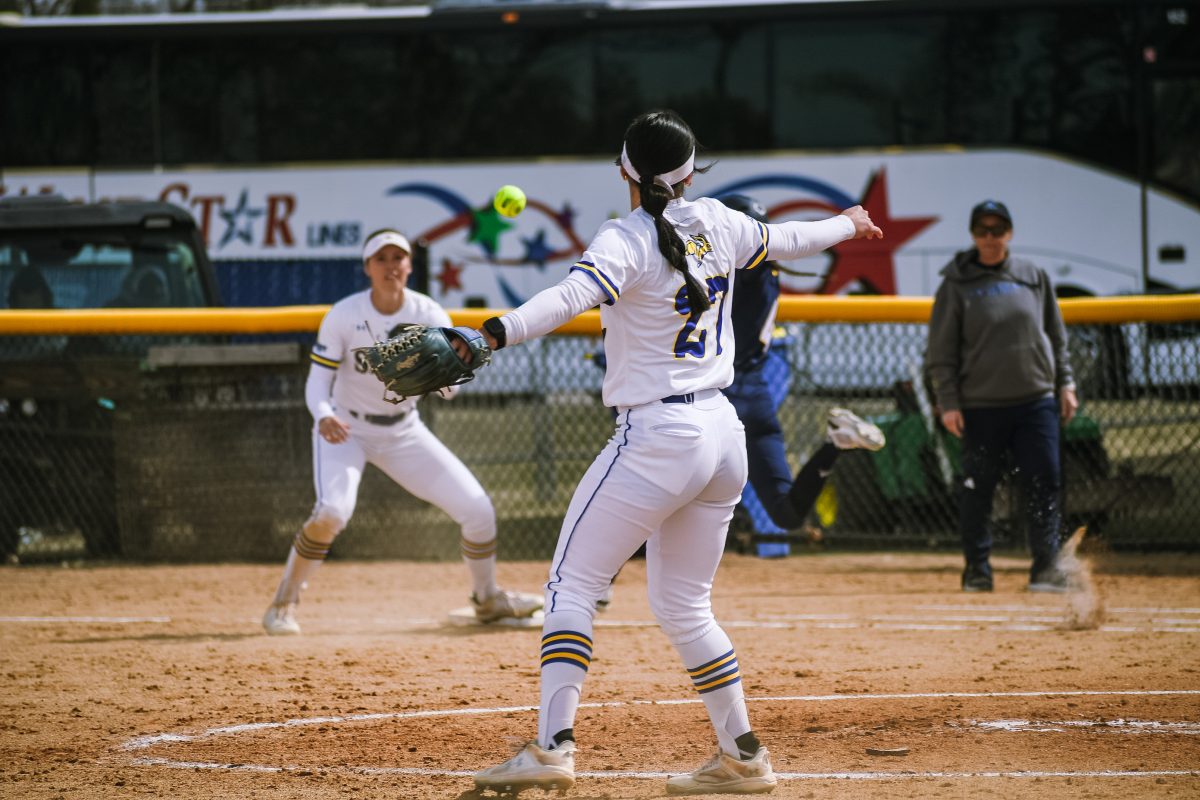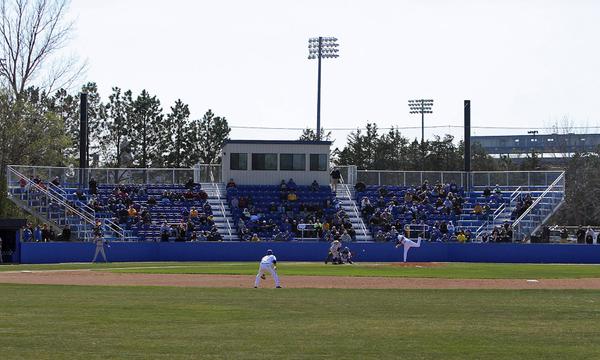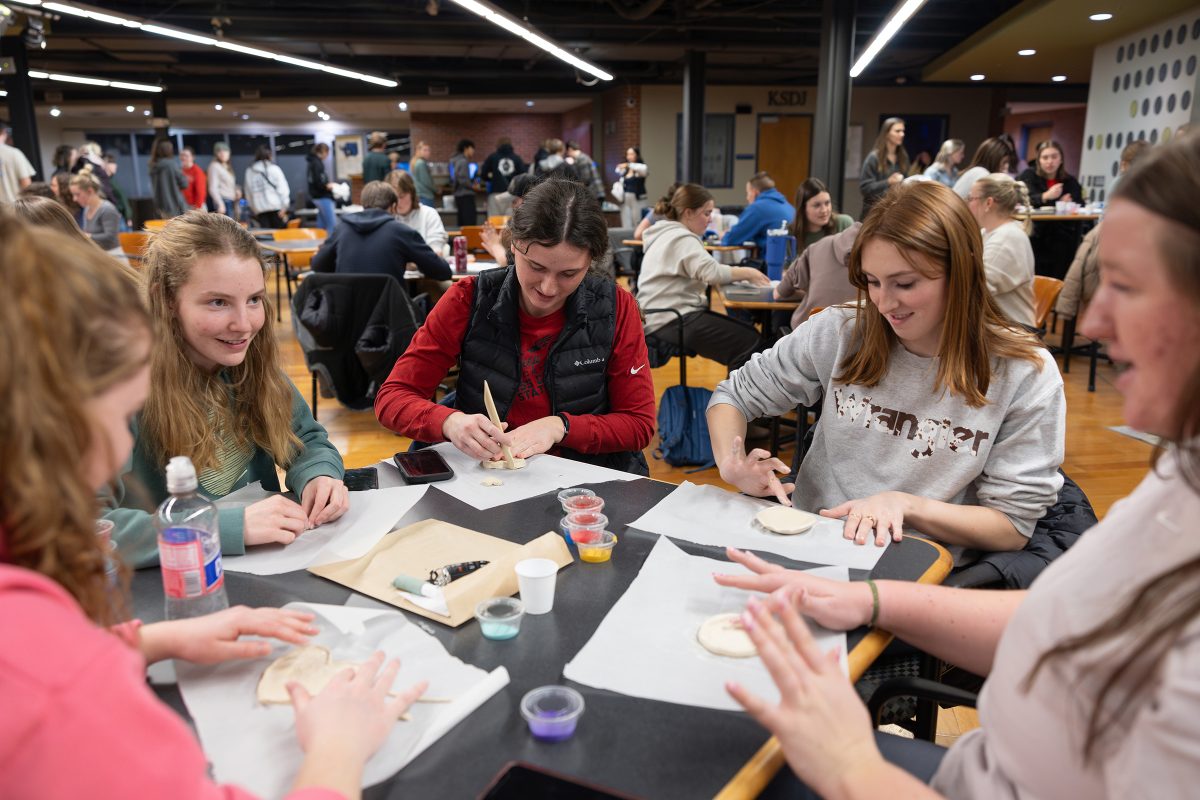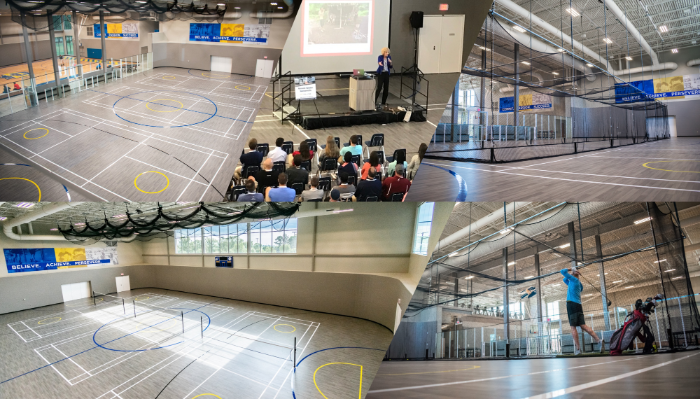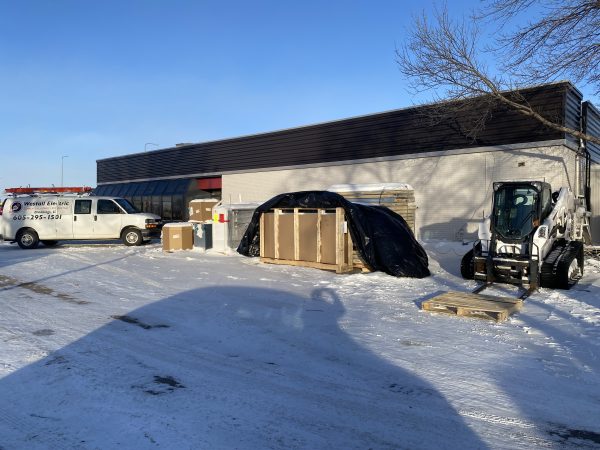H1N1 confirmed at SDSU
September 19, 2009
Amy Poppinga And Kali Lingen
Four cases reported, below SDSU administration’s expectations
By Amy Poppinga
H1N1 hit campus only two weeks into school.
Four cases of the H1N1 flu have been reported at SDSU, two in off-campus residents and two in students living in the residence halls. Three of those students went home to their permanent addresses and the other was already feeling better by the time the school was alerted.
“Four positives in two weeks of operation is actually below what we had expected,” said Doug Wermedal, assistant vice president for student affairs.
No new cases have emerged since the initial announcement last week.
SDSU has had a pandemic preparedness plan in place since 2006, which is probably keeping the incidents of H1N1 down, Wermedal said. But with students living in close proximity to one another, Wermedal said there still could be an outbreak in the residence halls.
“The concern for student well-being prompted our plan in the first place,” he said.
Students who are infected with H1N1 will be asked to tell their roommates. If they choose not to, the university will step in, Wermedal said.
The university does not plan on announcing which halls have seen H1N1 cases. Wermedal said that all students need to be aware of H1N1, not just those living in the same dorm as someone who has been infected. Students who live in other dorms are just as at risk for the virus, he said.
“Exposure to this can come from any person,” he said. “It could come from the person you’re sitting next to in the movie theater, the person who waits on you in a fast-food restaurant or the person who takes your money at a gas station. ? People are at risk in society in general.”
Sara Holmstrom, a sophomore math major, said she agrees with the university decision to not disclose the affected dorms because sharing that information may frighten some residents or promote apathy in other dorms.
“Students will think, ‘It’s not in my dorm,’ and avoid that dorm instead of being more cautious,” she said.
Especially since H1N1 is typically not any more severe than the seasonal flu, Emily Tschetter, a senior biology major for pre-dentistry, said she is not too concerned about H1N1 on campus.
“I haven’t made it a point to change what I do,” she said. “I already take proper precautions every flu season.”
Both Tschetter and Holmstrom said that the university should continually remind students about ways to prevent the spread of flu. They recommended more hand sanitizer stations to remind people of the importance of hand hygiene.
Wermedal said the university has stepped up its cleaning efforts to contain the spread. Dorm bathrooms are receiving more attention, the technology centers are sanitizing keyboards and The Wellness Center staff is taking added precautions.
“The fact that we have four cases now into three weeks of school suggests that our method is appropriate,” he said.
Even with the university’s increased efforts to contain the spread, though, students still need to practice personal responsibility -such as hand-washing and using hand sanitizer- Wermedal said.
“It’s not a question of where you live, but a question of what you do as a person.”
According to the South Dakota Department of Health, a total of 135 cases of H1N1 have been reported in South Dakota. Three of those people had to be hospitalized. Last year, there were 525 hospitalizations and four deaths due to the seasonal flu.
SDSU officials offer suggestions for protection against H1N1
By Kali Lingen
Officials had been waiting for H1N1 to show up at SDSU, and now that it’s here, they are reminding students that there are ways to help guard themselves against the virus.
The H1N1 vaccine that should be available in a month is one such option. South Dakota should receive about 110,000 doses by mid-October and 48,000 doses each week after that, according to the South Dakota Department of Health. The vaccine will be free.
Those at the highest risk for H1N1, which includes 19 to 24-year-olds, will receive the vaccine first. Federal officials are working to make enough vaccine for every American who wants it.
Health officials initially thought people would need two shots to be vaccinated against H1N1, but preliminary data from the Centers for Disease Control and Prevention now indicates that the vaccine is producing immunity in adults after one dose.
Brenda Andersen, associate director of Student Health and Counseling Services, said she does not know how many H1N1 vaccines SDSU will receive or when they are coming. It depends on how many are given out by the South Dakota Department of Health, she said.
Rita Parsley, a registered nurse at Student Health, said students should look for vaccination clinics in the coming months. She said H1N1 is not any worse than the regular flu, but students should be prepared.
“The symptoms are pretty much the same as the seasonal flu, but there is a little higher fever with this flu and little more sore throat,” said Parsley.
In addition to the H1N1 shot, students should also begin receiving shots for the seasonal flu, Andersen said. Appointments to get a flu shot can be made at the Student Health Clinic, and she said there will be flu shot clinics set up in the future on campus, although exact dates are unknown. A flu shot costs $21 at the clinic.
Specifically at SDSU, a pandemic preparation plan has been in place since 2006 when avian flu was in the news, said Doug Wermedal, assistant vice president of student affairs. On the My State Online Web site, https://mystateonline.sdstate.edu, a letter to students outlines SDSU’s recommendations for students who have H1N1 or other flu-related symptoms.
“We are concerned about anything that affects the health of our students. It is na’ve if a university wouldn’t be concerned,” said Wermedal.
A new aspect of SDSU’s planning process in preparation for cases of H1N1 and seasonal influenza is the Student Health Clinic H1N1 Nurse Hotline. The hotline’s number is 688-SICK (7425). The hotline went live on Tuesday, Sept. 8 and is available 9 a.m. to 5 p.m. Monday through Friday. Students can also call the Ask a Nurse hotline at 1-800-658-3535.
In SDSU’s recommendations for students, if students are sick, they should go home to their permanent residence, if possible, to recover. Students should not go to class if they suspect they have H1N1 or seasonal influenza to prevent the spread of sickness. Wermedal and Andersen both said the Division of Student Affairs and Academic Affairs are working together to assist in the verification of students’ class absences. The Student Health Clinic will provide SDSU faculty with electronic verification of student absences due to seasonal flu or H1N1.
“It’s something not to be paranoid about, but aware of and people should protect themselves by hand washing and hand [sanitizer] gel,” said Kelley Gilliland, a third semester nursing major.
H1N1 has been a concern across campuses nationwide, especially because college-age students generally live in close proximity to one another. Andersen said students do not always know if they are sick and how sick they actually are.
Students living in residence halls have resources available to them at the front desk of their hall. Gloves, masks and disposable thermometers called Tempa Dots are available, Wermedal said. “The supplies have been available since 2006,” he said.
Andersen said there are common sense practices which could prevent students from getting sick in the first place. Cover nose and mouth when coughing or sneezing, wash hands often with soap and water and avoid touching eyes, nose and mouth. It is also recommended for students to stay home if they are sick until a fever has been gone for 24 hours.
“Staying home if students are sick reduces the likelihood of transmission,” Andersen said.
There are six emergency warning signs which students should seek medical attention for: difficulty breathing, chest or abdominal pains, sudden dizziness, confusion, severe and persistent vomiting and when flu symptoms stop but come back worse than before, Andersen said.
If a student suspects he or she has H1N1 or seasonal influenza and seeks medical attention, the student should call the Student Health Clinic before coming in. Andersen says to call first to reduce the spread of sickness.
Parsley also encouraged students to use the H1N1 hotline.
“We will answer any call we can,” she said.







